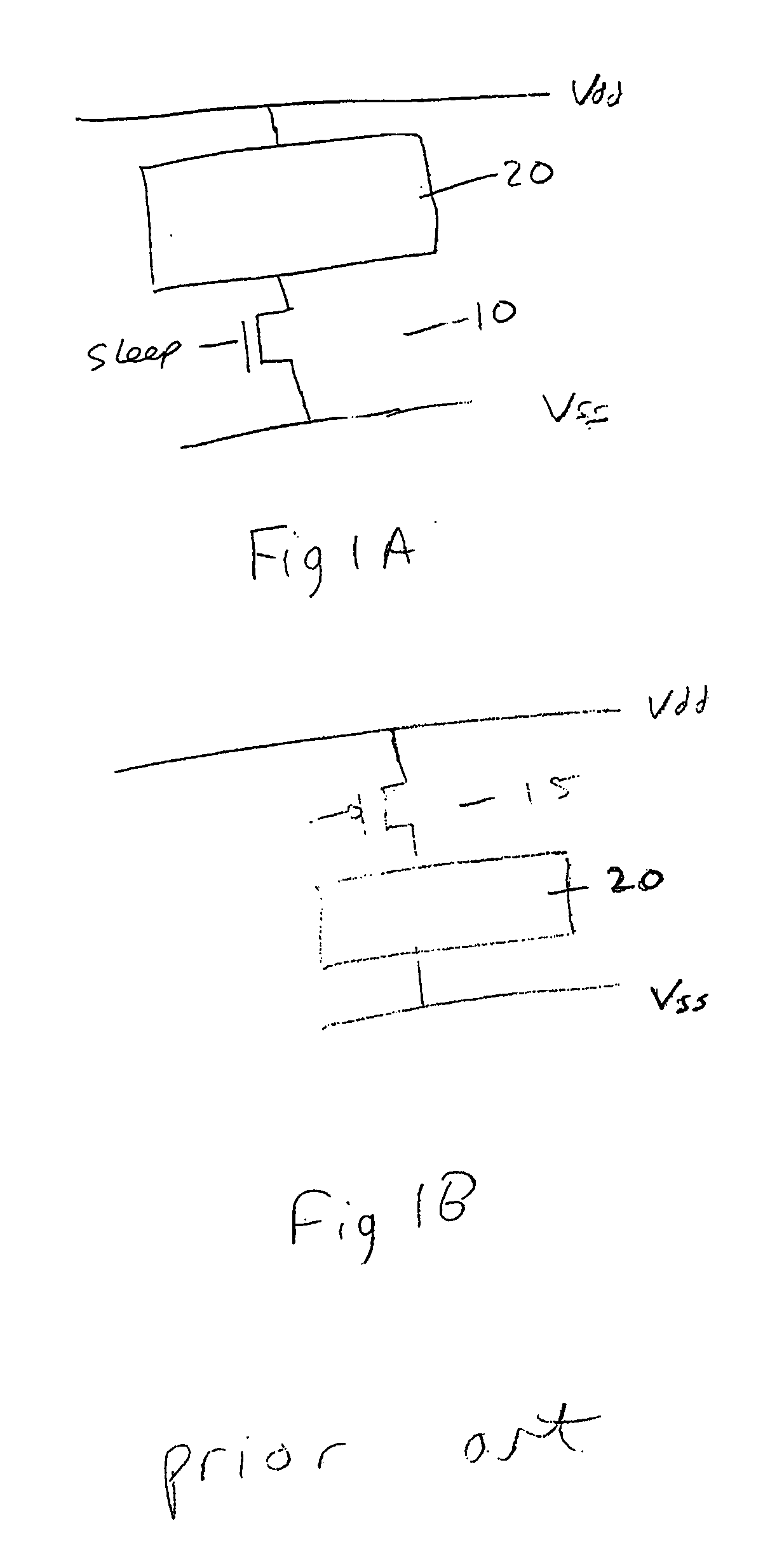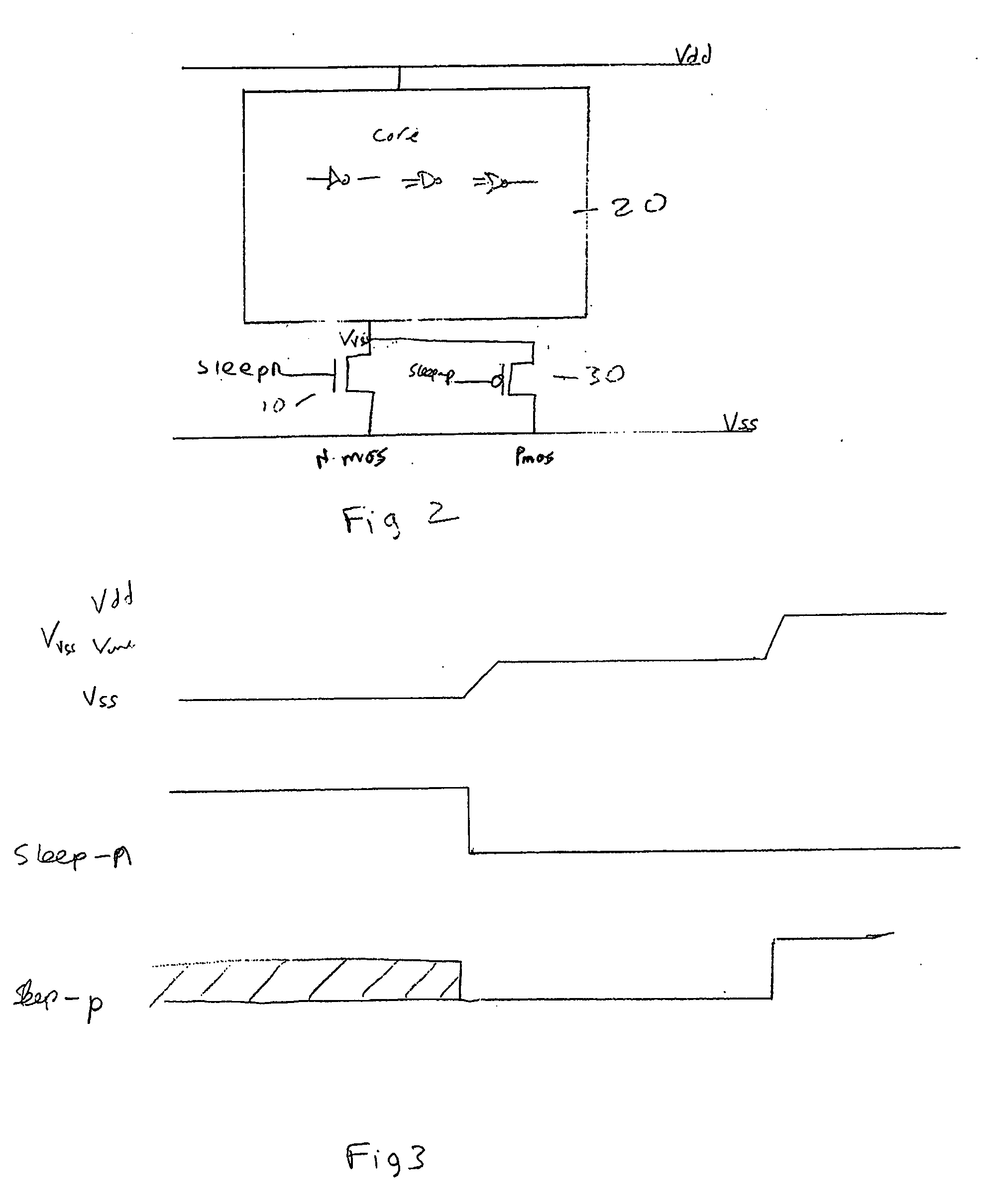Method and apparatus for controlling a voltage level
a voltage level and voltage technology, applied in the field of data processing, can solve problems such as the introduction of a new problem of data loss, and achieve the effect of convenient and efficient switching devices
- Summary
- Abstract
- Description
- Claims
- Application Information
AI Technical Summary
Benefits of technology
Problems solved by technology
Method used
Image
Examples
Embodiment Construction
[0042]FIG. 2 schematically shows a core of logic 20, which may comprise data storage elements, data processing elements and / or circuitry in general, powered by a high voltage rail Vdd and a low voltage rail Vss. The low voltage rail is generally held at ground. An NMOS power transistor 10 is connected between the core logic 20 and the lower voltage rails Vss. This NMOS power transistor 10 receives a sleep signal sleepn at its gate. When the sleepn signal is high, NMOS power transistor 10 is turned on and the voltage Vvss at its drain is approximately that of the lower voltage rail Vss i.e. it gives a virtual Vss to core logic 20. Thus, a high sleepn signal is in effect a no sleep signal and renders core logic 20 active. In this state, core logic 20 receives most of the voltage drop from between voltage rails Vdd and Vss, the voltage drop lost being that due to the voltage drop across the transistor due to its resistance when its on. This is designed to be small.
[0043] The voltage c...
PUM
 Login to View More
Login to View More Abstract
Description
Claims
Application Information
 Login to View More
Login to View More - R&D
- Intellectual Property
- Life Sciences
- Materials
- Tech Scout
- Unparalleled Data Quality
- Higher Quality Content
- 60% Fewer Hallucinations
Browse by: Latest US Patents, China's latest patents, Technical Efficacy Thesaurus, Application Domain, Technology Topic, Popular Technical Reports.
© 2025 PatSnap. All rights reserved.Legal|Privacy policy|Modern Slavery Act Transparency Statement|Sitemap|About US| Contact US: help@patsnap.com



